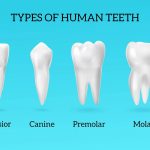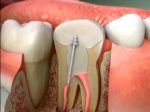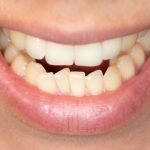Unlocking the Mystery: What Are Teeth Made Of?

Teeth are an essential part of the human body, yet most people know very little about them beyond their function in chewing and speaking. Despite their small size, teeth are complex structures made up of various components, each with its unique purpose. Understanding the composition and structure of teeth can provide insight into their function, as well as provide valuable information for maintaining dental health. The study of teeth and their components is known as dental anatomy, and it has been a subject of fascination for scientists and researchers for centuries. Teeth are made up of several different materials, including enamel, dentin, cementum, and pulp. Each of these components plays a crucial role in the function and health of teeth, and understanding their properties and interactions is essential for maintaining a healthy smile. In this article, we will explore the composition and function of teeth, providing insight into the mystery of what teeth are made of.
Understanding what teeth are made of is crucial to maintaining good oral health. Teeth are composed of four different tissues: enamel, dentin, cementum, and pulp. Enamel is the hardest substance in the human body and covers the outer layer of the tooth, protecting it from damage and decay. Dentin lies beneath the enamel and provides support and structure to the tooth. Cementum covers the tooth’s root and helps anchor it to the jawbone. Pulp is the innermost layer of the tooth and contains nerves and blood vessels. Knowing what teeth are made of allows us to better understand how to care for them, prevent decay and damage, and address any dental issues that may arise. With this knowledge, we can make informed decisions about our oral health and take steps to maintain healthy teeth and gums for a lifetime.
Teeth are complex structures made up of different layers and materials. They are the hard, white structures in the mouth that help us to chew, speak and smile. Teeth are anchored in the jawbone and are composed of three main layers: enamel, dentin, and pulp. Enamel is the tough outer layer that protects the tooth from damage and decay. Dentin is the middle layer that makes up most of the tooth and is responsible for the tooth’s shape and strength. Pulp is the soft inner layer that contains blood vessels and nerves that keep the tooth alive. Teeth play an important role in digestion as they break down food into smaller particles for easy swallowing and absorption of nutrients. They also play a crucial role in speech, allowing us to pronounce words and form sounds correctly.
The Anatomy of Teeth
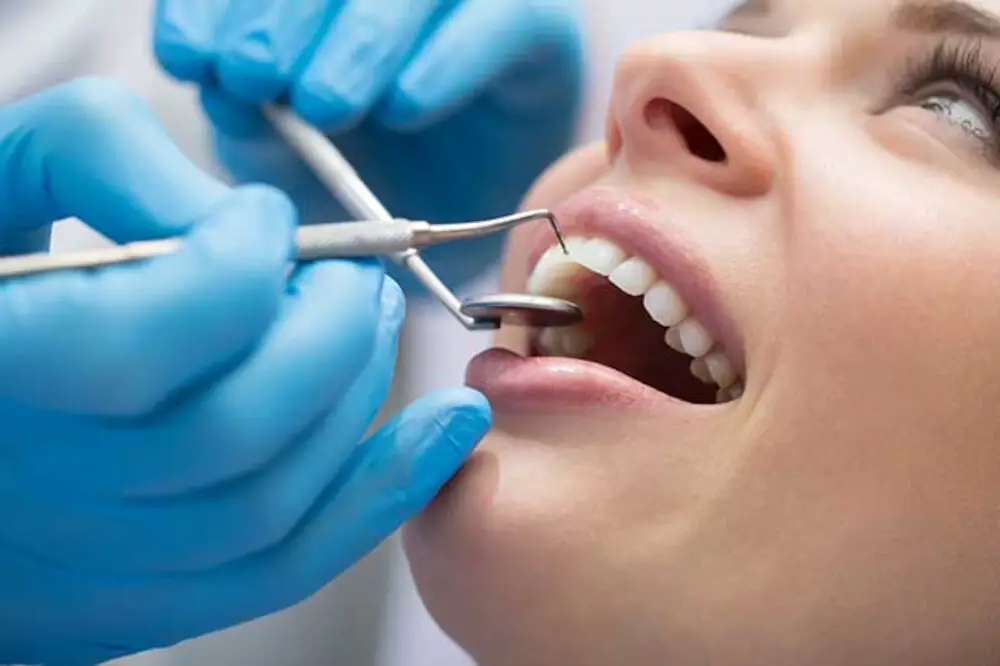
Teeth are essential for our daily activities, such as speaking, eating, and smiling. The anatomy of teeth is an intricate and complex system that involves several different components. The visible part of the tooth is called the crown, which is covered by enamel, the hardest substance in the human body. Enamel is made up of minerals, primarily calcium phosphate, and protects the tooth from wear and tear caused by chewing, biting, and grinding. Beneath the enamel is the dentin, a yellowish layer that makes up most of the tooth’s structure. Dentin is living tissue that contains nerves and blood vessels that help to nourish and protect the tooth. The pulp, located at the center of the tooth, contains nerves, blood vessels, and connective tissue. It is responsible for sensing temperature and pressure, and it also helps to keep the tooth alive. Another important component of the anatomy of teeth is the root. The root is the part of the tooth that is embedded in the jawbone, and it anchors the tooth in place. The root is covered by a layer of cementum, which helps to protect the root and allows it to attach to the jawbone. The periodontal ligament connects the cementum to the bone, providing stability and support. The root canal is a small channel that runs from the pulp to the tip of the root. It contains blood vessels and nerves that supply nutrients to the tooth and keep it healthy. Understanding the anatomy of teeth is crucial for maintaining good oral health and preventing tooth decay and other dental problems. By taking care of our teeth, we can ensure that they will serve us well for years to come.
Teeth are complex structures made up of several different parts, each with its own unique function. The crown is the visible portion of the tooth above the gum line and is covered in enamel, the hardest substance in the human body. Beneath the enamel lies the dentin, a softer tissue that makes up the bulk of the tooth. The pulp chamber is the innermost portion of the tooth, containing nerves and blood vessels that keep the tooth alive. The root is the portion of the tooth that is embedded in the jawbone and holds the tooth in place. Cementum covers the root and helps anchor the tooth to the bone. Finally, the periodontal ligament is a network of fibers that attaches the tooth to the surrounding bone and gum tissue. Together, these parts work in unison to allow us to bite, chew, and speak with ease.
A tooth is a complex structure that consists of different parts that work together to create a functional unit. The enamel is the outermost layer of the tooth that provides protection and strength. Underneath the enamel, the dentin is a dense layer that provides support and structure. The pulp is the innermost layer of the tooth that contains nerves and blood vessels. The cementum is a layer that covers the root of the tooth and provides attachment to the jawbone. The periodontal ligament connects the tooth to the jawbone and allows for movement during chewing. Together, these different parts of the tooth work in harmony to create a functional tooth that allows us to bite, chew, and speak.
The Composition of Teeth
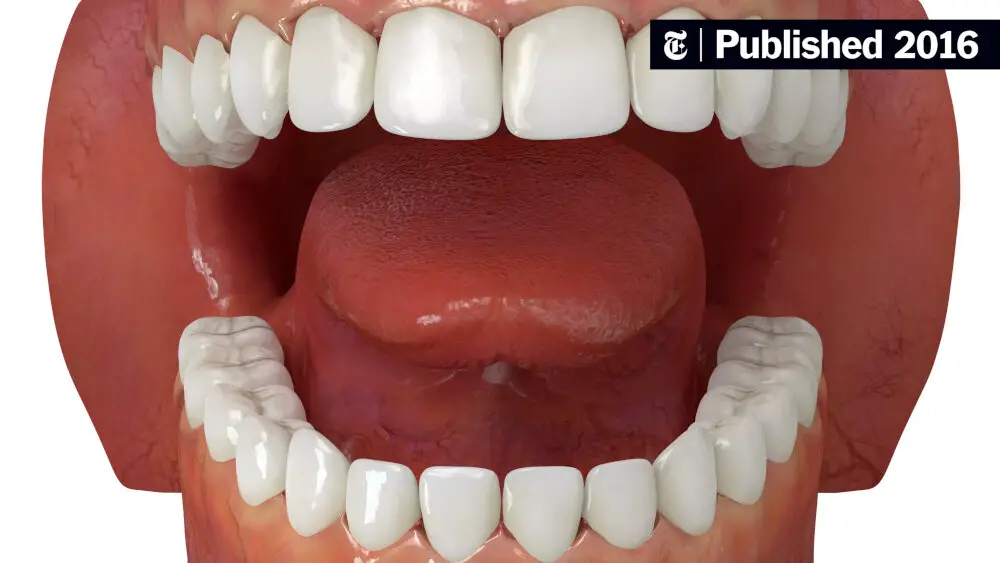
Teeth are one of the most important parts of the human body, not only for their role in aiding digestion but also for their contribution to our physical appearance. The composition of teeth is complex, and they are made up of several different layers. The outer layer of the tooth, the enamel, is the hardest substance in the human body and is primarily composed of minerals such as calcium and phosphate. Enamel is responsible for protecting the inner layers of the tooth from damage caused by chewing and other external factors. It is also responsible for giving teeth their white color. Beneath the enamel is the dentin layer, which is softer than enamel but still harder than bone. Dentin makes up the bulk of the tooth and is mostly composed of microscopic tubes that transmit sensations from the surface of the tooth to the nerves inside. The innermost layer is the pulp, which contains blood vessels and nerves that keep the tooth alive. The pulp is also responsible for the formation of new dentin and enamel throughout a person’s life. Understanding the composition of teeth is essential for maintaining good dental health, as it helps to identify potential problems and allows for appropriate treatment to be administered.
Teeth are complex structures made up of different materials that work together to help us bite, chew, and speak. The outermost layer of a tooth is called the enamel, which is the hardest and most mineralized tissue in the human body. Beneath the enamel is the dentin, a softer and more porous material that makes up most of the tooth’s structure. The pulp, located at the center of the tooth, contains nerves and blood vessels that nourish and support the tooth. Finally, the cementum covers the root of the tooth and helps anchor it to the jawbone. Understanding the composition of teeth can help us care for them properly and maintain good oral health.
Teeth are complex structures made up of four main components: enamel, dentin, pulp, and cementum. Enamel is the hard, outermost layer of the tooth that protects it from wear and tear. It is made up of a complex network of calcium and phosphate crystals, which give it its characteristic hardness and durability. Dentin is the layer beneath the enamel and is softer and more porous than enamel. It is made up of living cells called odontoblasts, which produce a network of tiny tubes that carry nutrients and signals to and from the pulp. The pulp is the soft, innermost part of the tooth that contains nerves, blood vessels, and connective tissue. Finally, cementum is a layer of hard, mineralized tissue that covers the root of the tooth and helps it to attach to the surrounding bone. Together, these four components work in harmony to form a strong, functional tooth that can withstand the rigors of chewing and other daily activities.
The Importance of Good Dental Health

Good dental health is essential for overall well-being. Teeth play a crucial role in the digestive system, enabling us to enjoy a variety of foods and maintain proper nutrition. Furthermore, our teeth contribute to our appearance and self-confidence. A healthy set of teeth not only allows us to eat and speak with ease but also enhances our smile and facial aesthetics. To maintain good dental health, it is important to practice proper oral hygiene, such as brushing and flossing regularly and visiting the dentist for routine check-ups and cleanings. Neglecting dental health can lead to a variety of problems, including tooth decay, gum disease, and bad breath. In addition to the physical benefits, good dental health can also have a positive impact on our mental health. People with healthy teeth tend to feel more confident and self-assured, which can improve their social interactions and relationships. Conversely, those with dental problems may feel embarrassed or self-conscious, which can lead to social isolation and diminished quality of life. Therefore, taking care of our teeth is not only important for physical health but also for emotional and psychological well-being. In conclusion, good dental health is crucial for overall health and well-being. By practicing proper oral hygiene and seeking regular dental care, we can maintain healthy teeth and enjoy the many benefits they provide.
Understanding the composition of teeth is crucial for maintaining good dental health. Teeth are made up of several layers, including the enamel, dentin, pulp, and cementum. The enamel is the outermost layer of the tooth, and it’s responsible for protecting the tooth from damage and decay. Dentin is the layer underneath the enamel and provides support to the tooth. The pulp is the innermost layer and contains nerves and blood vessels that keep the tooth alive. Finally, cementum covers the root of the tooth and helps anchor it to the jawbone. By understanding the different layers of the tooth, individuals can take better care of their teeth by having a better understanding of what they need to do to maintain them. For example, brushing and flossing regularly can help remove plaque and prevent decay from reaching the enamel. In addition, maintaining a healthy diet can help provide the necessary nutrients to keep teeth strong and healthy.
Regular dental checkups and cleanings are crucial for maintaining good oral health. During these appointments, dentists can identify and treat any issues before they become more serious problems. Cleanings also remove built-up plaque and tartar, which can cause tooth decay and gum disease if left untreated. Additionally, dentists can offer advice on proper oral hygiene and diet to prevent future dental issues. Neglecting regular checkups and cleanings can lead to a host of dental problems, including cavities, gum disease, and even tooth loss. Therefore, it is important to make dental appointments a priority in order to ensure a healthy smile and overall well-being.
Factors That Can Damage Teeth
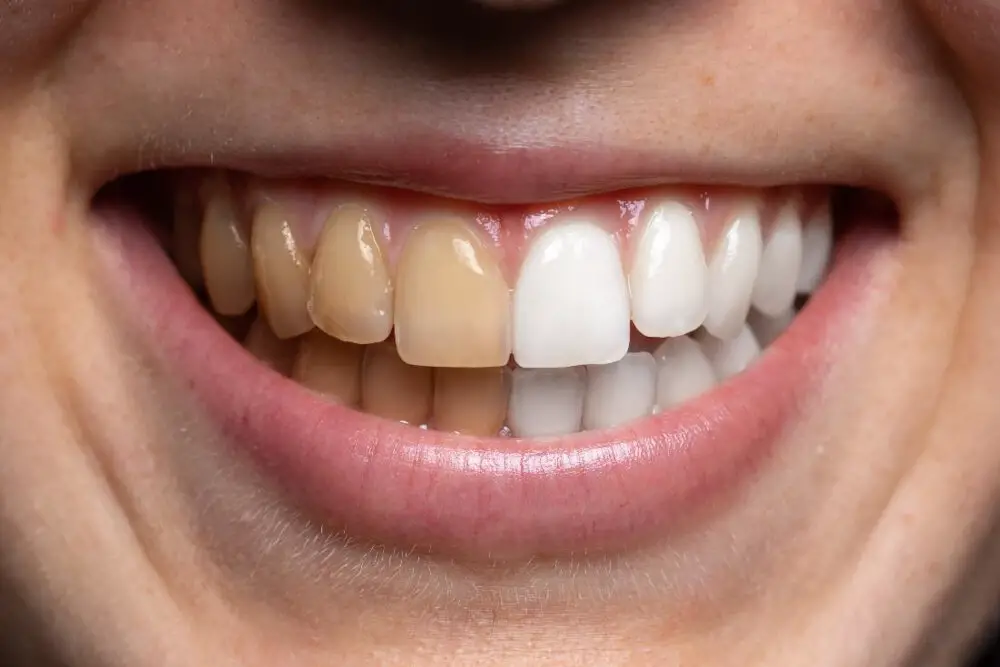
Teeth are an integral part of the human body and are necessary for the proper functioning of the digestive system. However, they are also susceptible to damage due to various factors. One such factor is poor oral hygiene. Failure to brush and floss regularly can lead to the accumulation of plaque, which can erode the enamel, leading to cavities and tooth decay. Additionally, consuming sugary and acidic foods and drinks can also damage teeth. These substances can create an acidic environment in the mouth, which can erode the enamel and weaken the teeth. Another factor that can cause damage to teeth is trauma. Trauma can occur due to accidents, falls, or sports-related injuries. When a tooth is hit or knocked out of its socket, it can cause damage to the enamel, pulp, or root, leading to tooth sensitivity or even loss. Moreover, habitual teeth grinding, also known as bruxism, can also cause damage to teeth. The constant grinding and clenching can wear down the enamel, leading to tooth sensitivity and pain. Overall, it is essential to take good care of teeth and avoid the factors that can cause damage to ensure healthy teeth and gums.
The teeth are one of the most critical parts of the human body, and they are also one of the most vulnerable. Several factors can cause damage to teeth, including poor oral hygiene, sugar consumption, and physical trauma. When people neglect their dental hygiene, plaque and bacteria can build up on their teeth, leading to tooth decay and gum disease. Consuming sugary foods and drinks can also contribute to tooth decay because bacteria in the mouth feed on sugar and produce acid that eats away at the teeth. Finally, physical trauma, such as accidents or even teeth grinding, can cause fractures or chips in the teeth, leaving them vulnerable to further damage. In order to maintain healthy teeth, it is essential to practice good oral hygiene, limit sugar consumption, and protect teeth from physical harm.
The different parts of teeth are made up of various materials, including enamel, dentin, pulp, and cementum. These materials can be affected by several factors that can lead to damage or decay of the teeth. For instance, poor oral hygiene can cause the buildup of plaque and tartar, which can erode the protective enamel layer of the teeth. This erosion can lead to cavities and tooth decay. Similarly, consuming sugary and acidic foods or drinks can also damage the enamel, causing sensitivity and tooth decay. Additionally, injury or trauma to the teeth can affect the dentin and pulp, leading to pain and sensitivity. Therefore, it is essential to maintain good oral hygiene, limit sugary and acidic foods, and wear protective mouthguards during sports to keep teeth healthy and strong.
To understand what teeth are made of, it is important to know the different parts of a tooth. The crown is the visible part of the tooth and is covered in enamel, the hardest substance in the body. Beneath the enamel is the dentin, a porous substance that makes up the majority of the tooth’s structure. The pulp is located in the center of the tooth and contains nerves and blood vessels. The cementum covers the tooth root and helps to anchor the tooth to the jawbone. Surrounding the tooth root is the periodontal ligament, which also helps to hold the tooth in place. Together, these parts create a strong and durable structure that allows us to chew and speak with ease.
Taking care of teeth is crucial for maintaining good oral health and preventing dental problems. Teeth are made up of various layers, including enamel, dentin, and pulp, each with its unique functions. Enamel, the outermost layer, is the hardest substance in the body and protects the tooth from decay and damage. However, it can wear down over time due to poor oral hygiene and the consumption of acidic and sugary foods and drinks. Dentin, the layer beneath the enamel, contains tiny tubes that lead to the nerve of the tooth. If the enamel wears away, bacteria can enter these tubes, causing sensitivity and pain. Additionally, neglecting oral hygiene can lead to gum disease, which can ultimately result in tooth loss. Therefore, regularly brushing, flossing, and visiting the dentist are essential for keeping teeth healthy and preventing dental issues.
Understanding what teeth are made of is crucial for maintaining good dental health. The enamel is the outermost layer that protects the teeth from decay and erosion, while the dentin provides the structure and support. The pulp, which is located in the center of the tooth, contains nerves and blood vessels that nourish the tooth. The cementum anchors the tooth to the jawbone. Knowing the composition of teeth can help individuals make informed decisions about their oral health, such as the importance of maintaining good oral hygiene habits and avoiding certain foods and beverages that can damage the enamel. Additionally, understanding the anatomy of teeth can aid in identifying potential dental problems early, allowing for prompt treatment and prevention of more serious issues down the road. In short, knowledge of what teeth are made of is key to achieving and maintaining optimal dental health for life.
Conclusion
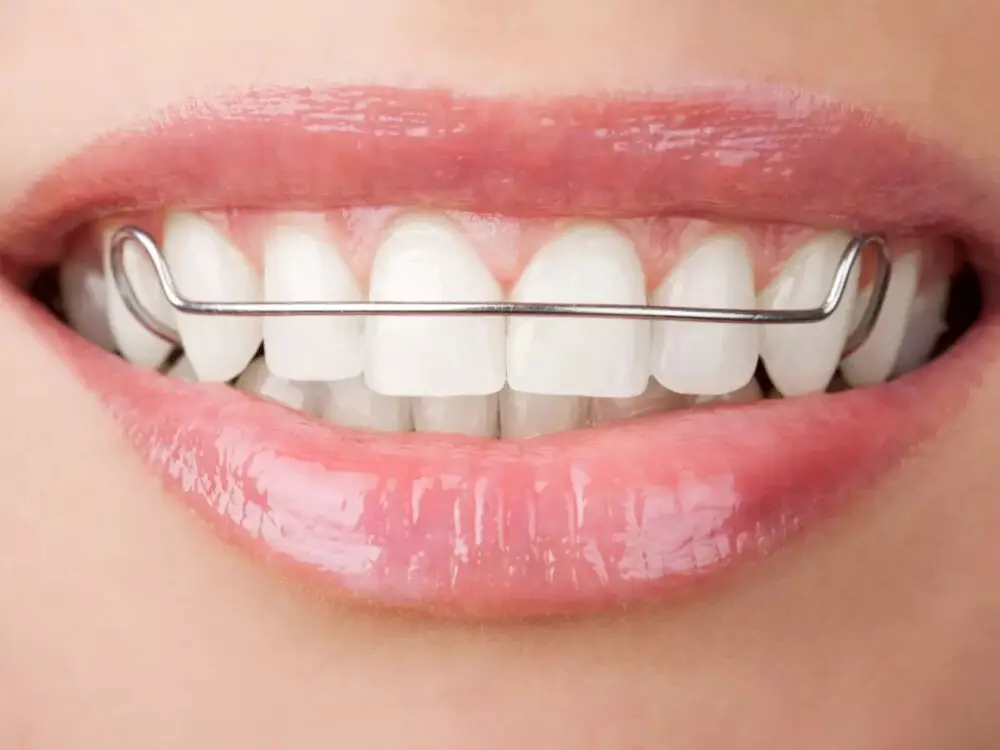
In conclusion, teeth are much more than just pearly whites. They are complex structures made up of various tissues and minerals, each serving a unique purpose in the oral cavity. From the enamel that protects the tooth’s surface to the pulp that houses its nerves and blood vessels, every component plays a vital role in maintaining dental health. Understanding what teeth are made of can help us appreciate their importance and take better care of them. So next time you brush your teeth or visit the dentist, remember the intricate anatomy that lies beneath the surface and the remarkable processes that keep our smiles strong and healthy.
